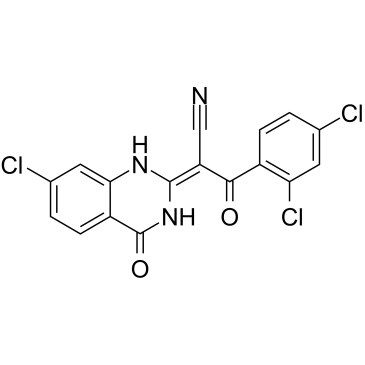1370554-01-0
| Name | Cilliobrevin D |
|---|
| Description | Ciliobrevin D is a cell-permeable, reversible and specific inhibitor of AAA+ ATPase motor cytoplasmic dynein. Ciliobrevin D inhibits Hedgehog (Hh) signaling and primary cilia formation. Ciliobrevin D inhibits dynein-dependent microtubule gliding and ATPase activity in vitro[1][2]. |
|---|---|
| Related Catalog | |
| Target |
Cytoplasmic dynein[1][2] |
| In Vitro | Cells treated with Ciliobrevin D exhibits abnormal (unfocused, multipolar, or collapsed) spindles with disrupted γ-tubulin localization in NIH-3T3 cells. Similar Ciliobrevin-induced spindle defects are observed in HeLa cells, although to a lesser extent. Ciliobrevin D addition also reversibly disrupts the pre-formed spindles of metaphase-arrested cells and reduces overall microtubule levels[1]. .Ciliobrevin D reversibly inhibits melanosome aggregation, but the non-cilia-disrupting derivative had no discernible effect at comparable doses. Ciliobrevin D similarly abrogates the movement of peroxisomes in Drosophila S2 cells[1]. |
| In Vivo | Knockdown of Dync1h1 or inactivation of dynein 1 by Ciliobrevin D in the testis in vivo perturbs spermatogenesis. Knockdown of Dync1h1 or the use of Ciliobrevin D to inactivate dynein 1 in the testis in vivo perturbs MT organization through changes in the spatial expression of EB1, perturbs F-actin organization, and perturbs distribution of adhesion protein complexes at the BTB, leading to a loss of BTB integrity. F-actin disorganization in the seminiferous epithelium following Dync1h1 knockdown or dynein 1 inactivation by Ciliobrevin D is mediated by changes in the spatiotemporal expression of actin regulatory proteins Arp3 and Eps8[3]. |
| References |
| Molecular Formula | C17H8Cl3N3O2 |
|---|---|
| Molecular Weight | 392.62 |
| Hazard Codes | Xi |
|---|
